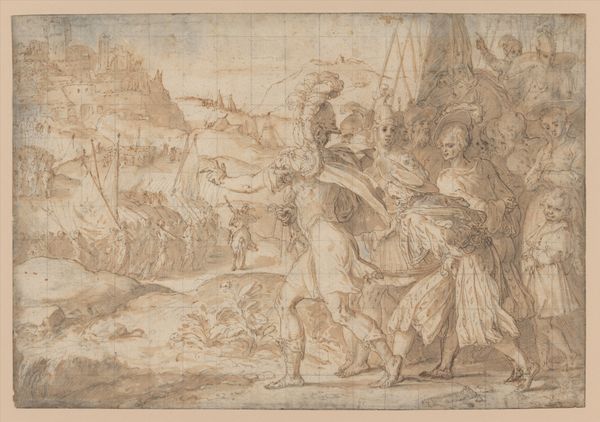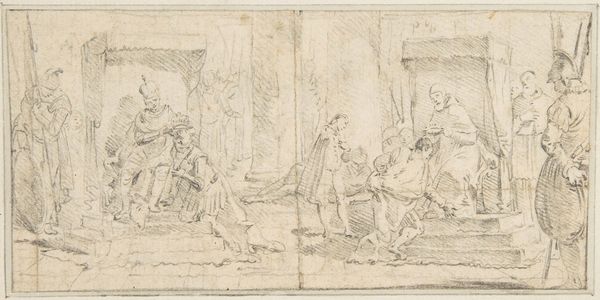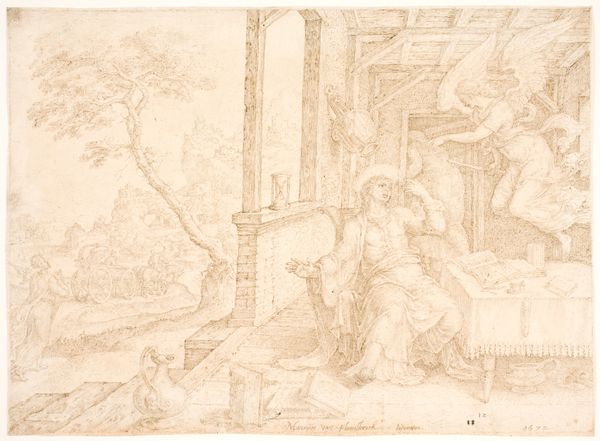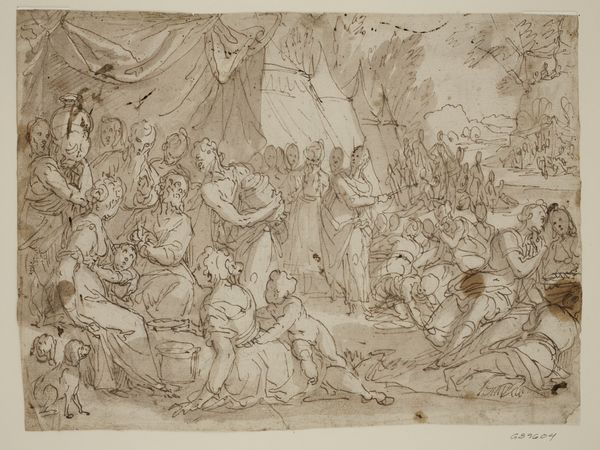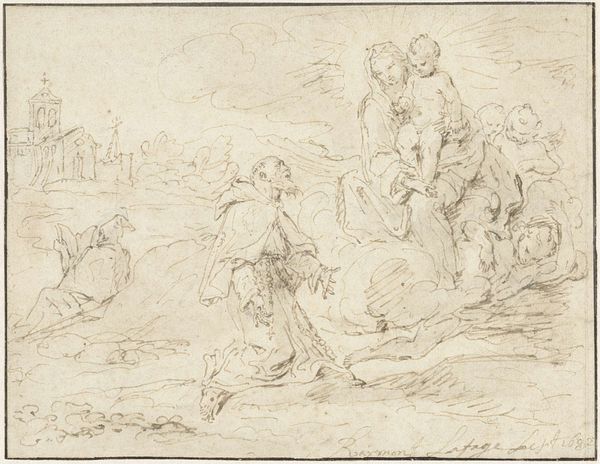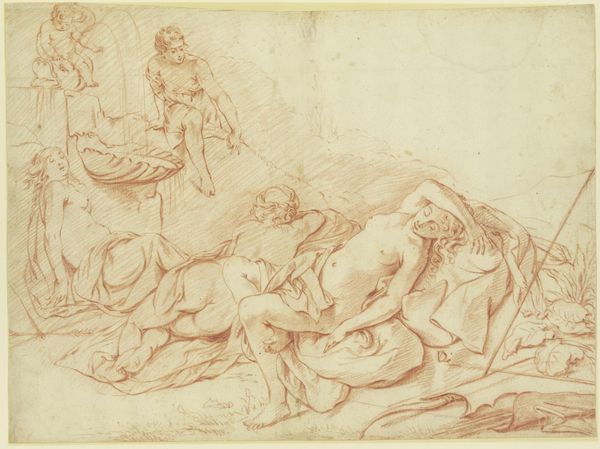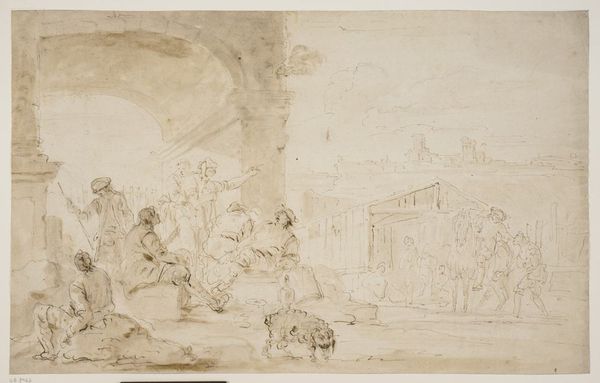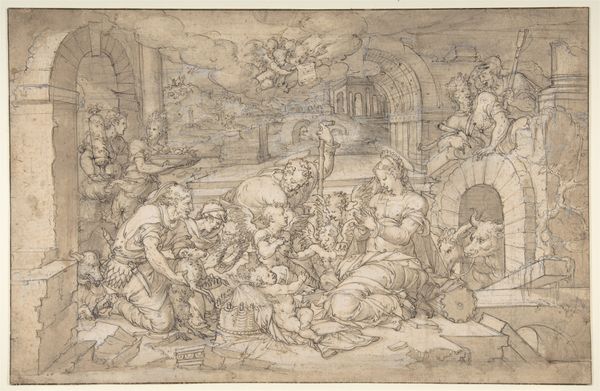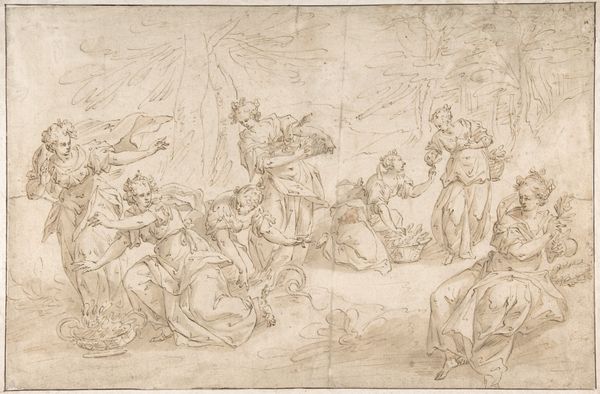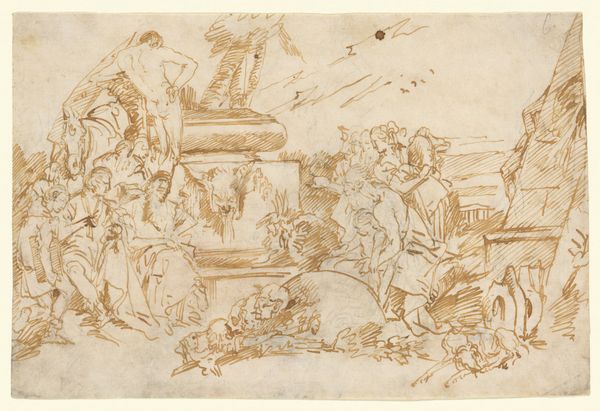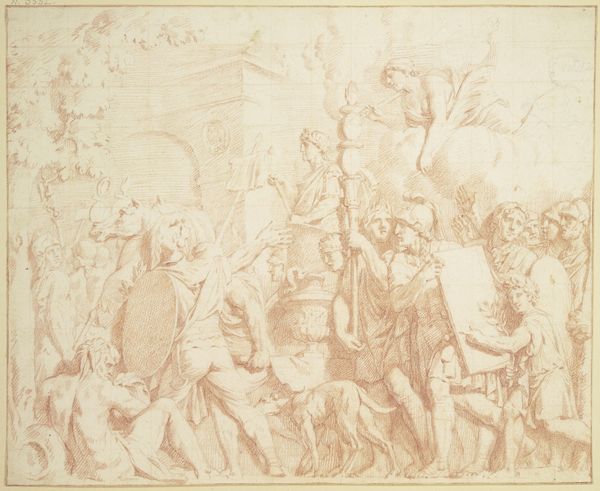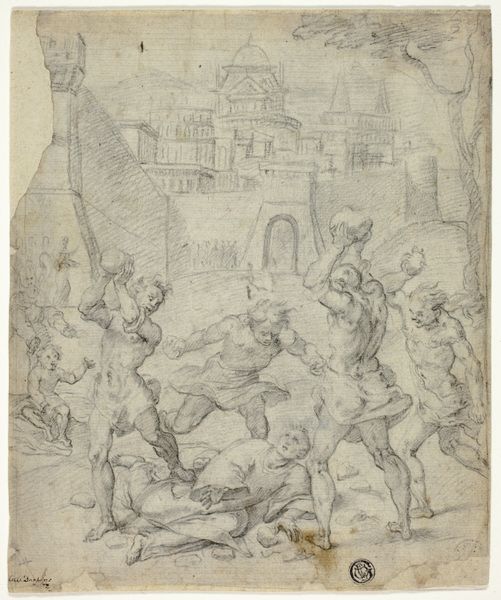
The Holy Family with Saint John the Baptist and Angels n.d.
0:00
0:00
drawing, print, paper, chalk, graphite
#
drawing
# print
#
pencil sketch
#
figuration
#
paper
#
11_renaissance
#
chalk
#
graphite
#
history-painting
#
academic-art
Dimensions: 198 × 280 mm
Copyright: Public Domain
Curator: Here we have "The Holy Family with Saint John the Baptist and Angels," an unsigned drawing, though attributed to Johannes Glauber, rendered with red chalk, graphite, and white chalk on paper. The scene unfolds with the central figures surrounded by playful cherubs and pastoral details. Editor: Oh, it feels like a warm terracotta dream, doesn’t it? The reddish-brown chalk gives everything this hazy, almost ethereal quality. It's intimate, like we're glimpsing a private moment. The landscape is idyllic and soft. Curator: Indeed, that warmth likely points to the function of this piece as a study, perhaps for a larger painting. Look at how Glauber uses hatching and cross-hatching to define form and create depth. Notice the delicate touch in the angels' wings contrasted with the bold strokes defining the drapery. Editor: Those angels, though! They strike me as very mischievous. They’re classical putti, of course, but the way they’re drawn gives them an edge. They are so light compared to the figures below who are more grounded, much more weighty in their portrayal. Curator: I find myself thinking about the positioning of John the Baptist on the right, almost holding his symbolic staff like a child's toy in this family idyll. Editor: That staff… it carries a lot of weight. It signifies John’s role as a precursor to Christ, a harbinger of sacrifice. Even in this seemingly peaceful scene, it’s a subtle reminder of the story’s eventual path. A visual whisper of fate in an image that might otherwise suggest only harmony. It grounds it. Curator: Precisely. And I agree it prevents the picture from lapsing into simple prettiness. All these symbolic tools add an unexpected intellectual and emotional resonance. Editor: Well, it makes you see how, beneath the graceful execution and tranquil surface, Glauber is hinting at something far bigger than just a family portrait, doesn’t it? Curator: I'd say the real art lies not only in the execution, but in embedding meaning within what appears, at first glance, to be simply beautiful. The shadows and light play with a dramatic undertone of complex elements from both earthly, historical and divine origins.
Comments
No comments
Be the first to comment and join the conversation on the ultimate creative platform.
